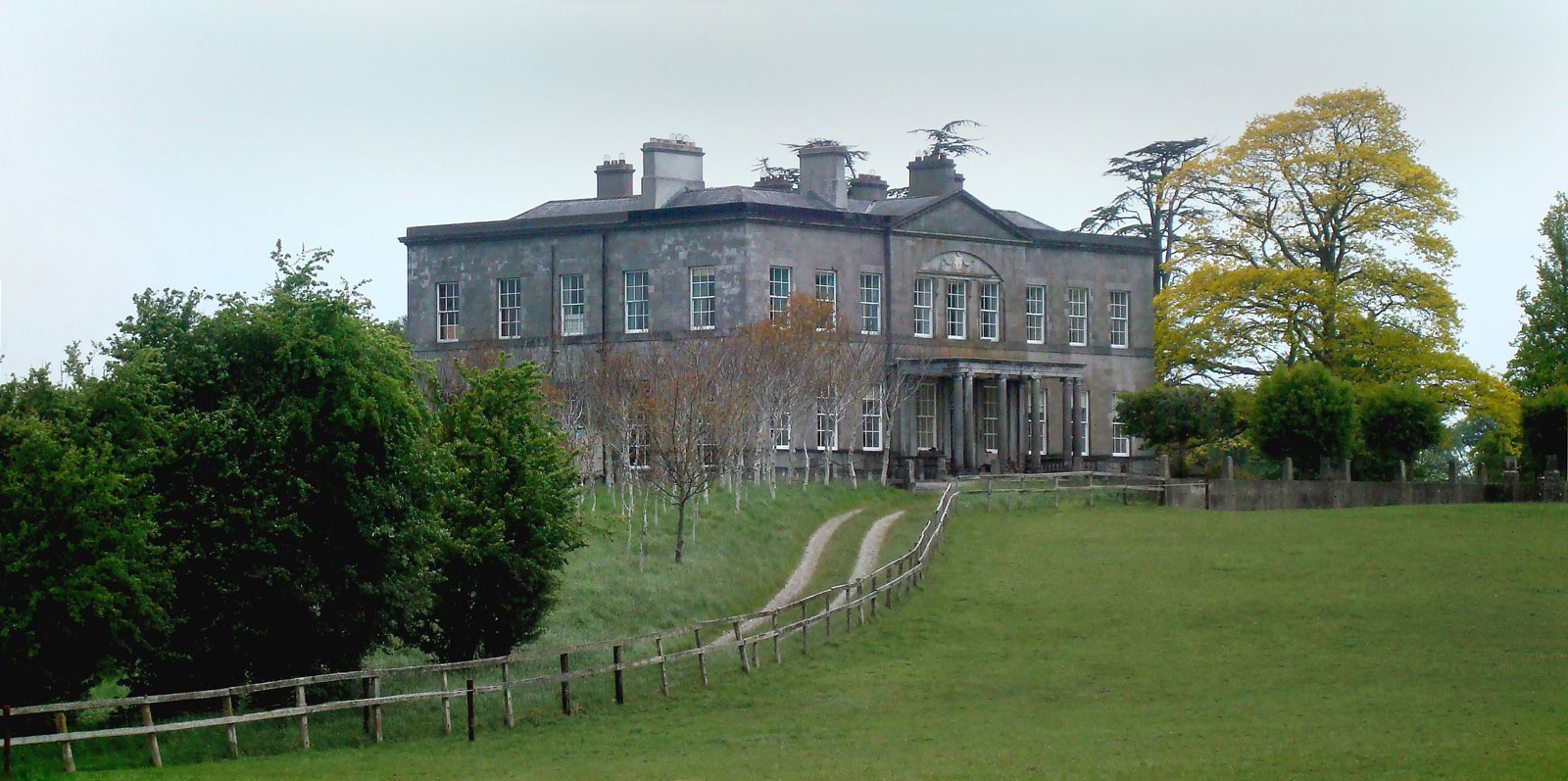Harristown
Harristown, near Punchestown in County Kildare, is a refined late Georgian neo-classical house of cut stone. It stands beside the River Liffey which flows though its picturesque, heavily wooded demesne in the western foothills of the Wicklow Mountains. The house, which has been attributed to the little-known architect Whitmore Davis, who also designed Charleville near Enniskerry, was accidentally destroyed by fire in 1901. The restoration was overseen by the High Victorian architect, James Franklin Fuller, who removed the upper storey but sadly failed to replicate the original late Georgian interiors.
Today Harristown is seven bays wide and of three stories, with a pedimented three bay-breakfront on the principal façade and a pair of full-height bows facing the river. There is an elegant Ionic porch at the entrance while the three windows overhead are grouped together under a blind half-elliptical neoclassical arch.
The La Touches were a Huguenot family from the Loire, who fled to Holland on the Revocation of the Edict of Nantes. They later moved to Ireland, amassing a fortune in the weaving trade and, ultimately, in banking.
La Touche's Bank was founded in 1715 and traded for more than 170 years. The family was among the original stockholders when the Bank of Ireland was founded in 1783 and a La Touche became its first Governor. They were also renowned as philanthropists and as patrons of architecture and the arts, and built a number of important houses in Dublin and the surrounding counties. The second David La Touche bought the Harristown estate in 1768 and it was subsequently inherited by his second son, John, who commissioned the new great house.
The La Touche descendants remained at Harristown until 1921 but the death of the last John La Touche in 1904 marked the end of a colourful era. Originally devoted to hunting, hence his soubriquet 'The Master' he became a Baptist convert and built a church, manse and school at Brannockstown, demolishing nearby Portlester Castle to provide a source of building materials.
Possibly the most interesting visitor to Harristown during his tenure was John Ruskin, the celebrated writer and art critic who was one of the most influential figures of the Victorian age. Lady Maria La Touche sought Ruskin’s help in developing the artistic tastes of her precocious and talented younger daughter Rose. Master and pupil fell in love but, when Rose came of age, she refused to marry Ruskin and subsequently died in an asylum.
In 1946 Major Michael Beaumont and his wife Doreen bought the estate and set about a major programme of restoration. They installed furniture and pictures from their former home at Wotton, in Buckinghamshire, where Sir John Soane had designed the interior. Doreen Beaumont brought many Soanian influences to bear in decorating the house, including colours that are not traditionally associated with Georgian taste, and these help to overcome Fuller’s lack of sympathy with the late 18th century ensemble. The front hall is a magnificent double-height room and gives access to the main reception rooms; the library, drawing room and dining room. Perhaps Harristown’s best-kept secret is the 17th century Chinese wallpaper and the Tudor paneling that Doreen and her husband brought to the house.
Today the Beaumont family is deeply committed to maintaining Harristown and farming the estate.
Address & Contact
Harristown, Brannockstown, Kildaret: +353 45 483614
Available as a Film Location
Houses and Garden
Individual House Visits
Groups by Arrangement
Individual Garden Visitors
Culture and Education
Educational Visits
Events
Special family celebrations
Meetings or receptions
Opening Details
Open May 3rd-27th and September 5th-29th.
May 3, 4, 5, 6, 7, 8, 9, 10, 11, 12, 13, 14, 15, 16, 17, 18, 19, 20, 21, 22, 23, 24, 25, 26, 27.
September 5, 6, 7, 8, 9, 10, 11, 12, 13, 14, 15, 16, 17, 18, 19, 20, 21, 22, 23, 24, 25, 26, 27, 28, 29.
10am to 2pm
Closed Thursdays


